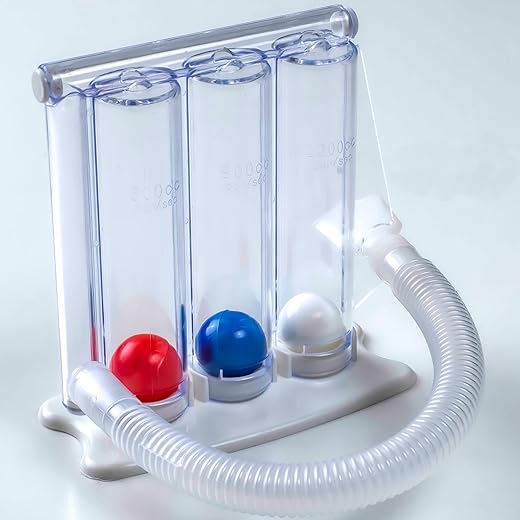This step-by-step guide is designed to show you how to effectively use deep breathing exercises as a powerful tool for stress relief. Within the guide, you’ll find easy-to-follow instructions on how to incorporate deep breathing techniques into your daily routine to promote relaxation and reduce stress levels. Whether you’re looking to unwind after a long day or improve your overall well-being, this guide will walk you through the process of utilizing deep breathing for maximum stress relief benefits.
Unlock Inner Peace with These Bestsellers
Understand the Basics of Deep Breathing
- Find a quiet and comfy spot to sit or lie down.
- Place one hand on your chest and the other on your abdomen.
- Slowly breathe in through your nose as you feel your diaphragm move downward.
- Exhale gradually through your mouth, noticing your abdomen rise and fall.
Example: Find a cozy chair, or lie down on a comfortable surface. Place your right hand on your chest and your left hand on your abdomen to monitor your breath. Now, take a calm and deep breath in through your nose. Feel how your stomach rises and expands as you breathe in — this indicates a deep diaphragmatic breath. Slowly exhale through your mouth, ensuring your abdomen contracts and falls. Repeat this process several times until you feel yourself relaxing and your breath evening out.
Practice Diaphragmatic Breathing
To practice diaphragmatic breathing effectively, focus on breathing deeply into your diaphragm instead of taking shallow breaths into your chest. Follow these steps to cultivate proper breathing technique:
- Inhale slowly: Start by inhaling deeply through your nose, allowing your abdomen to expand rather than your chest rising.(Example: Inhale for a count of 4 seconds, feeling your stomach pushing outward.)
- Hold briefly: Pause for a few seconds at the peak of your inhalation, keeping your breath in.(Example: Hold your breath for 2 seconds before exhaling.)
- Exhale slowly: Release the air slowly through your mouth, emptying your lungs completely by contracting your abdominal muscles.(Example: Exhale for a count of 6 seconds, feeling your stomach squeezing in.)
- Repeat: Practice this deep breathing pattern several times to get comfortable with breathing through your diaphragm.
By following these steps and gradually incorporating diaphragmatic breathing into your daily routine, you can experience a sense of calm and relaxation, while also improving oxygen flow in your body. Practice regularly to reap the full benefits of this breathing technique.
Incorporate Visualization Techniques
Practice deep breathing by finding a quiet place to sit or lie down. Close your eyes. Inhale slowly through your nose, filling your lungs with air. As you exhale through your mouth, imagine releasing any stress or tension you’ve been holding onto. With each inhale, picture yourself in a peaceful setting — a serene beach, a quiet forest, or any place that brings you tranquility. Feel a sense of calm washing over you with each breath in. Visualize inhaling positive energy that revitalizes your mind and body. Exhale any negativity or worries that have been weighing you down. Repeat this visualization exercise for a few minutes to promote relaxation and rejuvenation.
Use Counting Techniques
- Inhale slowly and deeply for a count of 4, feeling your lungs fill up with air.
- Hold your breath for 4 counts, keeping your chest and shoulders relaxed.
- Exhale slowly and completely for 4 counts, emptying your lungs fully.
- Pause for 4 counts before inhaling again, maintaining a steady rhythm.
- Find a comfortable breathing pace and adjust the counts to suit your own breathing pattern.
Counting while breathing helps regulate your breath and promotes relaxation. Practicing this technique regularly can reduce stress and anxiety, resulting in a calmer state of mind. Remember to focus on your breathing and the counting, allowing yourself to let go of distractions and tension with each breath cycle.
Practice Mindfulness
Focus on your breath:
- Sit or lie down comfortably. Close your eyes gently.
- Take a slow, deep breath in through your nose, feeling your abdomen rise. Count to four as you breathe in.
- Pause briefly.
- Slowly exhale through your mouth, counting to six. Notice your abdomen fall.
Acknowledge distractions:
- When thoughts arise, don’t push them away. Acknowledge them calmly.
- Let go of the distractions and gently guide your focus back to your breath.
Repeat:
- Continue this deep breathing technique for a few minutes, keeping your attention on the sensations of breathing.
Incorporate Deep Breathing into Your Routine
Practice Deep Breathing Daily
Start incorporating deep breathing into your routine as soon as you wake up. Simply find a comfortable position, sit or lie down with eyes closed, and inhale deeply through your nose for a count of four. Hold your breath for a count of four, then exhale slowly through your mouth for a count of six. Repeat this process several times. Aim to practice deep breathing during stressful moments or before bedtime. Consistency is essential, so try to set aside a few minutes each day to cultivate this powerful stress-relief tool.
Breathe easy and relax!
In conclusion, deep breathing is a crucial practice for effectively managing stress and achieving relaxation. By incorporating this simple yet powerful tool into your daily routine, you can calm your mind, reduce anxiety levels, and improve overall well-being. Remember, taking a few moments to focus on your breath can make a significant difference in how you handle the challenges of everyday life. Embrace the power of deep breathing and take proactive steps towards a more balanced and peaceful state of mind.
Breathing Aids and Supplies –
Expert Breathing Strategies
Mastering the Art of Deep Breathing: A Step-by-Step Guide
- Find a quiet and comfortable place to sit or lie down
- Close your eyes and take slow, deep breaths in through your nose
- Hold your breath for a few seconds before slowly exhaling through your mouth
- Repeat this deep breathing pattern for a few minutes, focusing on relaxing your body and mind
- Gradually increase the length of your deep breathing sessions as you become more comfortable with the practice
Mastering Deep Breathing Techniques
Can deep breathing exercises be helpful in improving sleep quality?
Yes, deep breathing exercises can be helpful in improving sleep quality. When done consistently, deep breathing can help relax the body and calm the mind, making it easier to fall asleep and stay asleep. Taking slow, deep breaths can reduce stress, lower anxiety levels, and regulate your body’s parasympathetic nervous system, preparing you for a restful night’s sleep. Incorporating deep breathing exercises into your bedtime routine can be an effective way to improve the quality of your sleep.
How can deep breathing exercises be integrated into an existing daily routine?
Deep breathing exercises can easily be integrated into an existing daily routine by setting aside dedicated time for them. One way to incorporate deep breathing is by starting the day with a few minutes of focused breathing either before getting out of bed or while having morning coffee. Another option is to incorporate deep breathing exercises during breaks throughout the day, such as during lunchtime or before beginning a new task. Establishing a consistent time for deep breathing will help make it a habit and part of your daily routine. This practice can help reduce stress, improve focus and increase overall well-being.
What is the connection between deep breathing exercises and mindfulness or meditation practices?
Deep breathing exercises are often used as a central component in the practice of mindfulness and meditation. The connection lies in the fact that deep breathing helps focus the mind, reduce stress, and bring awareness to the present moment. By taking slow, deliberate breaths and paying attention to each inhale and exhale, individuals can cultivate a sense of calmness and awareness that is essential to both mindfulness and meditation practices. Deep breathing also helps regulate the body’s response to stress and encourages a state of relaxation, making it an effective tool for enhancing mindfulness and meditation experiences.
Are there specific deep breathing techniques recommended for beginners?
Yes, there are specific deep breathing techniques that are recommended for beginners to help them focus on their breathing and achieve a sense of calm and relaxation. One common technique is diaphragmatic breathing, also known as belly breathing, where one focuses on expanding the abdomen during inhalation to fully engage the diaphragm. Another popular technique is box breathing, which involves inhaling for a count of four, holding the breath for a count of four, exhaling for a count of four, and then holding the breath again for a count of four before repeating the cycle. These techniques can help beginners build awareness of their breathing patterns and gradually develop a deeper and more effective breathing practice.
Is there a recommended time of day to practice deep breathing exercises?
While there is no definitive recommended time to practice deep breathing exercises, many experts suggest incorporating them into your routine at a time when you can be consistent. It could be beneficial to practice deep breathing exercises in the morning to start the day with a sense of calm, or in the evening to wind down and relax before bedtime. Ultimately, the best time is when you can commit to making it a regular practice in your day.
Are there specific deep breathing exercises for reducing stress and anxiety?
Yes, there are specific deep breathing exercises that have been shown to be effective in reducing stress and anxiety. Examples of such techniques include diaphragmatic breathing, mindful breathing, box breathing, and the 4-7-8 technique. These exercises help calm the nervous system and promote relaxation by increasing oxygen intake and slowing down the heart rate. Practicing deep breathing regularly can have a significant impact on managing stress and anxiety levels. It is recommended to seek guidance from a healthcare professional or a trained instructor to learn these techniques effectively and incorporate them into daily practice.
How long should each deep breathing session typically last?
Each deep breathing session should typically last for about 10 to 20 minutes to experience maximum benefits. By taking deep, mindful breaths for this duration, one can effectively relax the mind and body, reduce stress levels, and promote better overall well-being. Remember, consistency is key for reaping the full advantages of deep breathing exercises. Start with shorter sessions and gradually increase their duration as you become more comfortable with the practice.









![[0]Five Star Spiral Notebook + Study App, 5 Subject, College Ruled Paper, Fights Ink Bleed, Water Resistant Cover, 8-1/2" x 11", 200 Sheets, Blue (73635)](https://adventistmarket.com/wp-content/uploads/2024/02/0fivestarspiralnotebookstudyapp5subjectcollegeruledpaper.jpg)



![[0]Cetaphil Face Wash, Daily Facial Cleanser for Sensitive, Combination to Oily Skin, NEW 20 oz, Gentle Foaming, Soap Free, Hypoallergenic](https://adventistmarket.com/wp-content/uploads/2024/02/0cetaphilfacewashdailyfacialcleanserforsensitivecombinationto.jpg)


Breathing exercises have really made a difference for me during hectic days. This article explains it well.
This article provided me with a new perspective on using deep breathing for relaxation. Thank you!
I enjoy learning new stress relief techniques. Excited to add deep breathing to my toolbox. Thanks!
I struggle with stress quite often. Looking forward to testing out deep breathing to see if it helps.
Deep breathing does wonders for my anxiety. These additional tips are much appreciated.
Great article! I never realized how simple deep breathing can be yet effective. Will give it a try.
I found these techniques really helpful! Excited to start incorporating deep breathing into my routine.